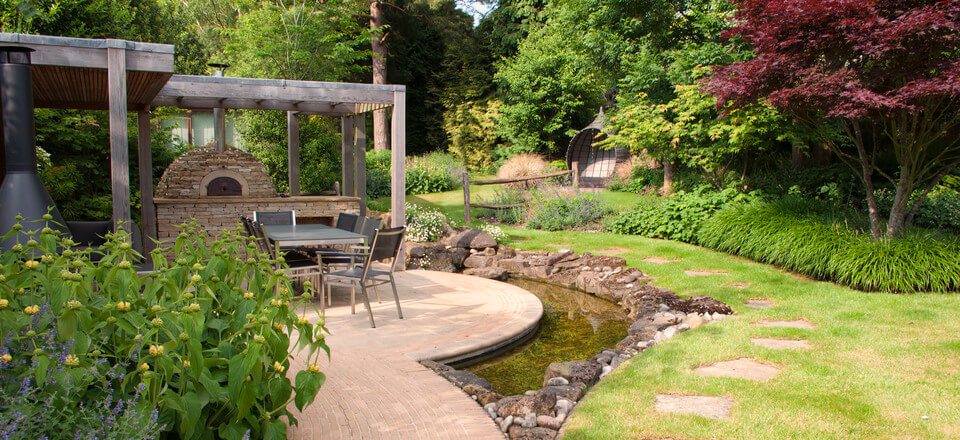If you spend time looking at designer gardens in magazines thinking you could never afford one, think again! Anyone who has an appreciation for the great outdoors fantasizes about being able to have a designer garden. However, most people shy away at throwing so much money at a single project.
Luckily, thanks to our 5 tips, you can create a designer garden without the designer. This way you can get the garden of your dreams without breaking the bank!
5 Ways To Create A Designer Garden By Yourself:
Step 1: The Theme
Are you looking for a minimalistic garden? A modern one? Are you going for a country chic vibe or not? These are important questions that can be hard to answer. Before planting your first flower, you need to know what you are after. It all starts with a vision. Surely, by now, you have at least a couple of ideas about how your ideal garden should look like. While it may not seem like it, this is the most important step in getting a designer garden without a designer. Why? Because knowing what you want is almost half the work!
If you’re not very sure about what you want, try to write down the details or elements of your favorite gardens from the magazines. Before you know it, a theme will emerge. This will let you know exactly what you’re going after.
Step 2: Choosing The Amount Of Light
The second most important thing about creating the ideal garden is understanding the importance of lighting and using it to maximize the space. If your garden is small, then the more light it gets, the bigger it shall appear. Likewise, if your garden is too big, you can shrink it by planting more trees, which will block light from entering.
Light, however, isn’t only about manipulating the perception of size. It can also play a huge part in the aesthetic of your garden. You can opt for shorter decorative trees to keep it light and airy, or you can give it a very dramatic and wild look by using trees that grow tall and large.
Furthermore, walls and fences are also important because their surface can suck up light or bounce it back depending on the color they’re painted. Light colors bounce the light, while darker ones absorb it.
Step 3: Flowers & Colors
Colors are for a garden, what light is for the eyes. Without pops of color here and there, a garden is simply nothing more than a backyard. Unlike interior decorations, gardens are infinitely more forgiving when it comes to mixing different colors. If anything, it’s encouraged to overdo it. Basically, any color works perfectly fine because flowers, no matter the kind, are beautiful.
Naturally, being faithful to your theme, you will most likely limit yourself to certain flowers and shurbs only, which is a good thing. This will keep things cohesive, which is one of the staples of designer gardens.
Step 4: Layout & Containers
Perhaps the most difficult step in designing your own garden is figuring out the layout. This is the part where most people have difficulty negotiating the size and location of pathways, lawns, patios and so on. Still, having the actual layout of your property in mind, as well as the theme you’ve settled on should make this step run much smoother.
Regardless of how you design your garden, keep in mind that when it comes to foliage, you should arrange it in ascending order (height). Start with the smaller plants and shrubs and work your way up to the trees. This way you will keep things clean, regardless of your actual design choice.
Since you won’t plant everything in the ground, pots and containers will likely make an appearance. You can opt for ceramic pots or plastic containers. No matter what you choose, make sure they fit in with the scenery and respect the color scheme.
Step 5: A Bold Element
Every designer garden needs to have a centerpiece. A bold element of some sort. Whether it’s an abstract sculpture, a fountain, or a small pond, you need to set your garden further apart with something special.
Ponds, for example, are very popular this year. You can fill them up with fishes and add water plants. Within a couple of months, an entire ecosystem will form around it. Doves and birds will come to drink water, frogs will start to take up residence and before you know it, your garden will look absolutely stunning!
A clever design looks effortless. This is why designer gardens almost always give off a very relaxed vibe. They are clutter-free, and every plant, tree, and shrub looks like it was meant to be in that exact spot. Hopefully, our 5 steps to create a designer garden by yourself will prove more than useful in helping you create the garden of your dreams without breaking the bank!
